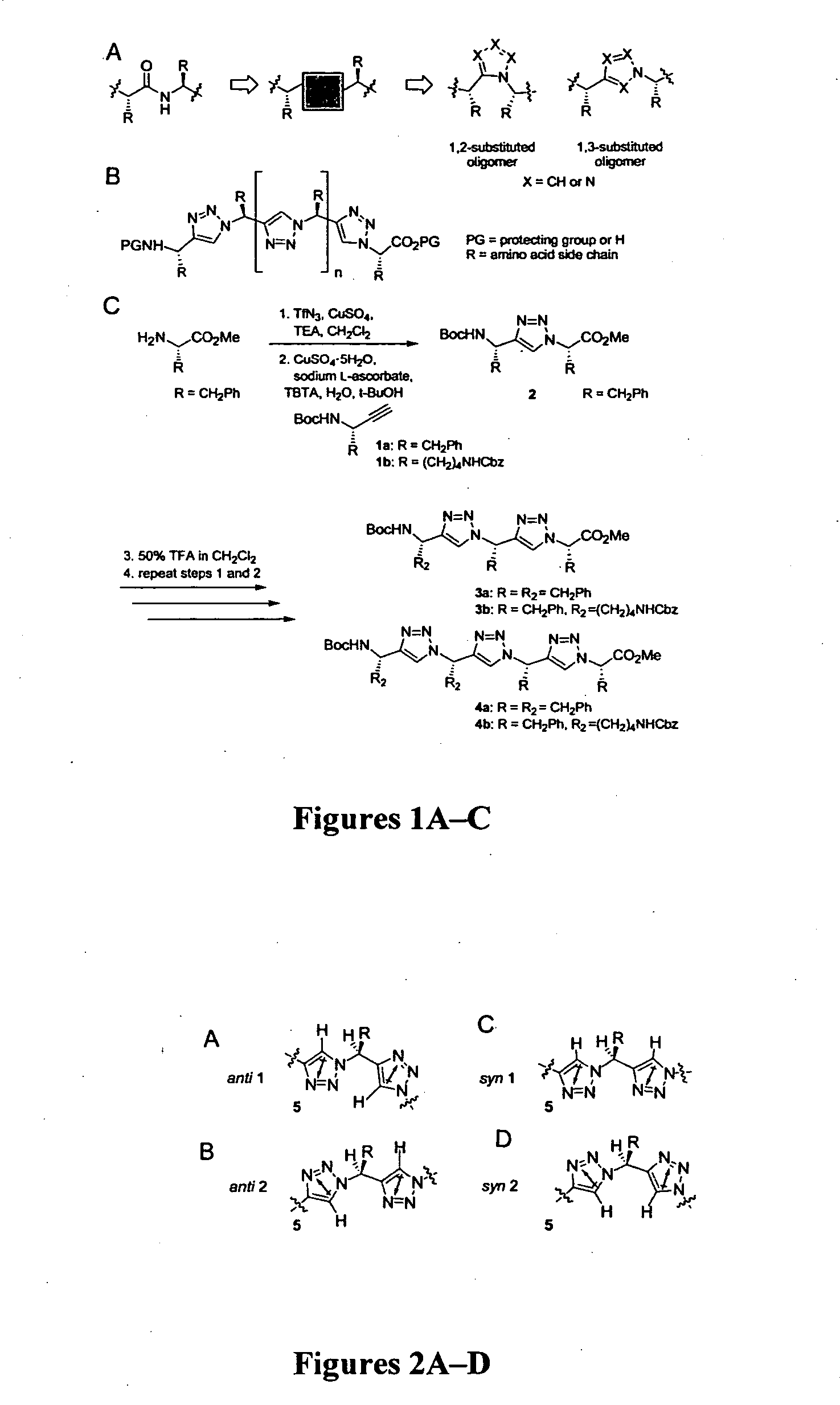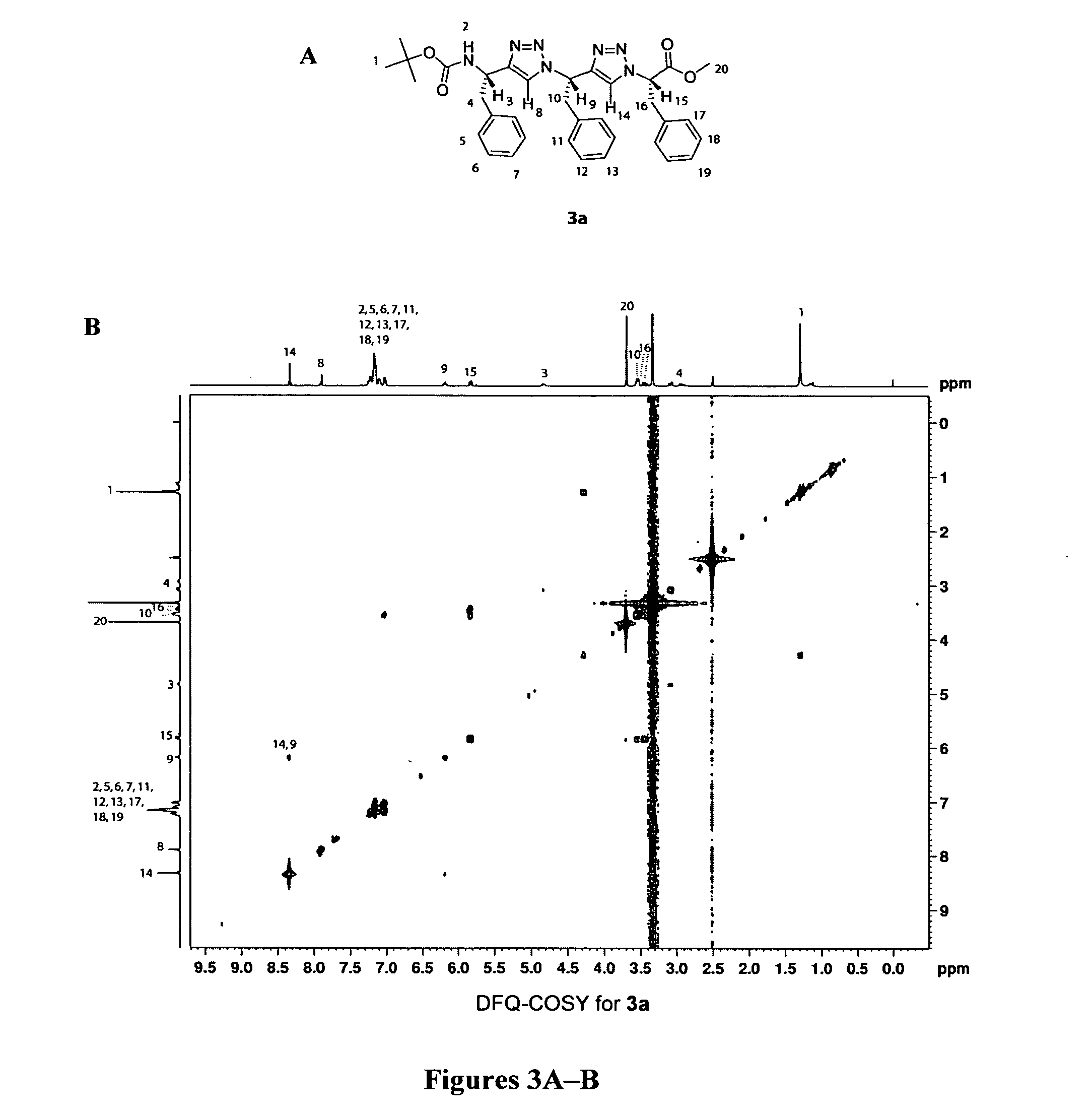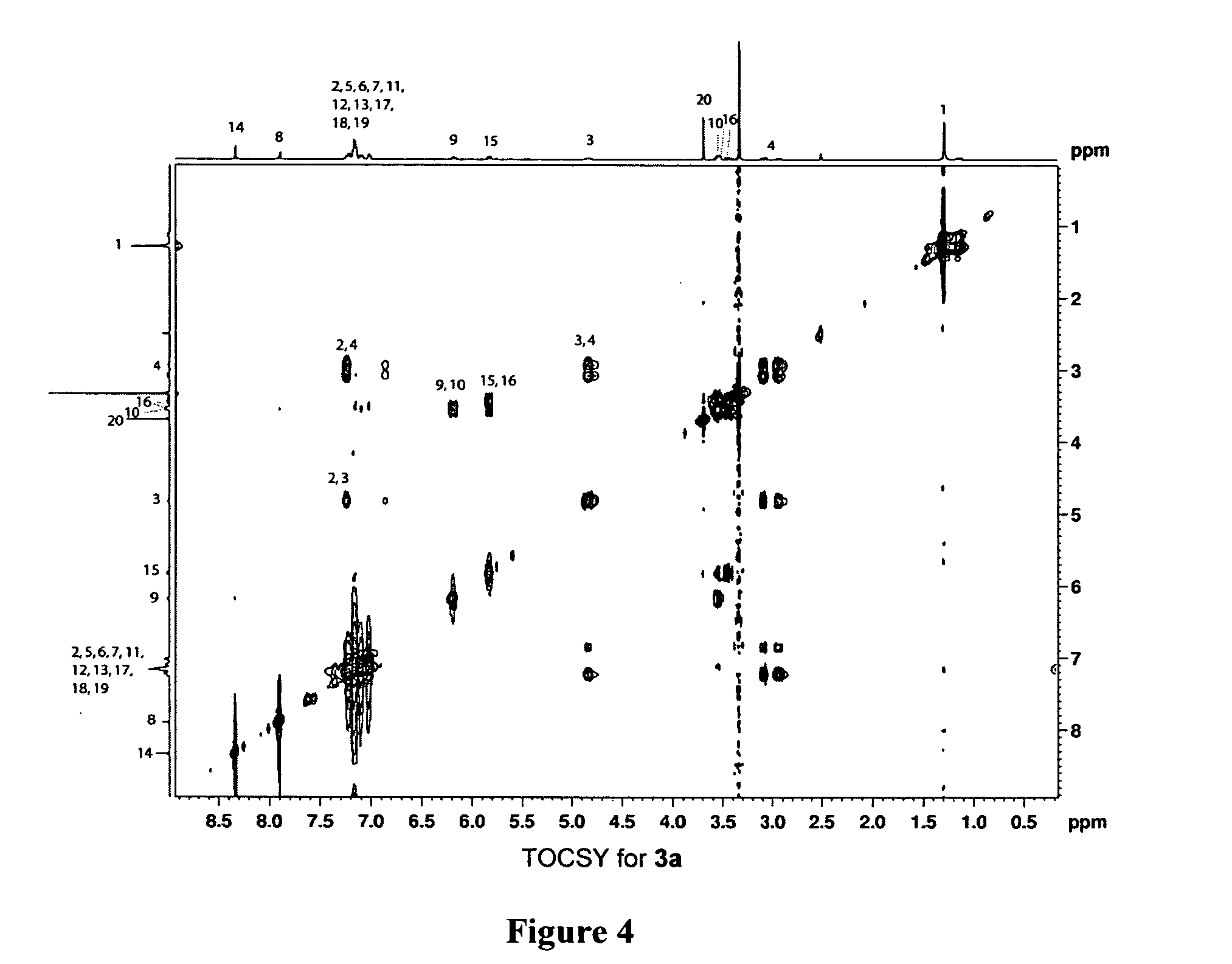Methods for preparing nonpeptidic oligomers from amino acids
a technology of amino acids and oligomers, which is applied in the field of nonpeptidic oligomers and methods for preparing nonpeptidic oligomers from amino acids, can solve the problems of limiting the potential of peptides as reagents and their ability to be used as peptide mimics, and achieves improved cellular uptake, improved pharmacological profiles, and stable structural organization
- Summary
- Abstract
- Description
- Claims
- Application Information
AI Technical Summary
Benefits of technology
Problems solved by technology
Method used
Image
Examples
example 1
Materials and Methods
[0073] Commercial-grade reagents and solvents were used without further purification except as indicated. Dichloromethane (“DCM”), tetrahydrofuran (“THF”), and DMF were dried prior to use by percolation through anhydrous Al2O 3 as described by Grubbs and coworkers (Pangbom et al., Organometallics 15:1518-1520 (1996), which is hereby incorporated by reference in its entirety). All reactions were stirred magnetically; moisture-sensitive reactions were performed under nitrogen in flame-dried glassware. Unless indicated, all reactions were performed at room temperature. Thin-layer chromatography (“TLC”), using ethyl acetate:hexane, ethyl acetate:DCM or methanol:DCM as the solvent system, was used to monitor reactions. Visualization was accomplished by either ultraviolet light or by immersing the plate in a 1% aqueous solution of potassium permanganate and heating. Flash chromatography with silica gel was performed following the conditions described by Still and cow...
example 2
Synthesis of 1,3 Substituted Oligomers
[0079] 1,3-substituted oligomers were prepared from amino acid methyl esters through an iterative reaction sequence, shown in Scheme 1, consisting of conversion of the amine to the corresponding azide (Alper et al., Tetrahedron Lett. 37:6029-6032 (1996), which is hereby incorporated by reference in its entirety), copper(1)-catalyzed azide-alkyne [3+2] cycloaddition (Wang et al., J. Am. Chem. Soc. 125:3192-3193 (2003), which is hereby incorporated by reference in its entirety) with the suitable amino alkyne 1a or 1b, followed by removal of the protecting group. To examine the solution conformations of short 1,3-substituted triazole oligomers, two trimers (3a and 3b) and two tetramers (4a and 4b) were prepared and studied as described in Examples 3-9.
example 3
Synthesis of Alkynes 1a and 1b
[0080] The amino alkynes 1a (1H NMR (400 MHz, CDCl3) δ 7.25-7.15 (m, 5H), 4.68 (br s, 1H), 4.60 (br s, 1H), 2.91 (dd, AB pattern, J=13.2, 5.4 Hz, 1H), 2.86 (dd, AB pattern, J=13.3, 7.1 Hz, 1H), 2.19 (d, J=2.2, 1H), 1.35 (s, 9H); 13C NMR (100 MHz, CDCl3) δ 154.62, 136.37, 129.81, 128.59, 126.91, 82.82, 80.01, 72.21, 43.88, 41.73, 28.35; LRMS m / z for C15H19NO2 [M+Na)+, calcd 268.1, found 268.1) and 1b (1H NMR (400 MHz, CDCl3) δ 7.23-7.17 (m, 5H), 5.22 (br t, 1H), 5.03 (br t, 1H), 5.01 (s, 2H), 4.28 (br q, 1H), 3.05 (br q, 2H), 2.19 (d, J=2.3 Hz, 1H), 1.56-1.49 (m, 2H), 1.41-1.35 (m, 2H), 1.34 (s, 9H), 1.33-1.17 (m, 2H); 13C NMR (100 MHz, CDCl3) δ 156.57, 154.98, 136.73, 128.44, 127.02, 127.98, 83.54, 79.74, 71.18, 66.43, 40.74, 35.55, 30.33, 29.31, 28.42, 22.66; LRMS m / z for C20H28N2O4 [M+Na]+, calcd 383.2, found 383.2) were prepared as shown in Scheme 2 from the aminoaldehydes by the Corey-Fuchs homologation reaction as described in Reginato et al., Tet...
PUM
| Property | Measurement | Unit |
|---|---|---|
| dipole moment | aaaaa | aaaaa |
| chemical shifts | aaaaa | aaaaa |
| chirality | aaaaa | aaaaa |
Abstract
Description
Claims
Application Information
 Login to View More
Login to View More - R&D
- Intellectual Property
- Life Sciences
- Materials
- Tech Scout
- Unparalleled Data Quality
- Higher Quality Content
- 60% Fewer Hallucinations
Browse by: Latest US Patents, China's latest patents, Technical Efficacy Thesaurus, Application Domain, Technology Topic, Popular Technical Reports.
© 2025 PatSnap. All rights reserved.Legal|Privacy policy|Modern Slavery Act Transparency Statement|Sitemap|About US| Contact US: help@patsnap.com



